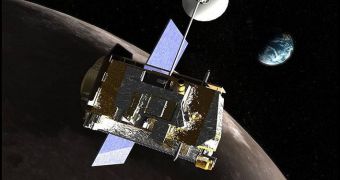Officials at NASA announced that the Lunar Reconnaissance Orbiter (LRO) has just completed the exploration phase of its mission, on September 16.
This represents an impressive achievement for both the spacecraft and the team managing it, as the orbiter managed to change the way we look at the Moon almost entirely.
Before it launched, on the same Atlas 5 rocket that also delivered the LCROSS impactor, we tended to view the Moon as a dry and desolate place, that could not have supported longer-term manned missions to its surface.
Since then, the spacecraft has performed numerous studies, produced highly-detailed maps of the lunar surface, and also managed to find water-ice in the plumes that LCROSS rose when it impacted the Moon.
“LRO completed a one-year exploration mission in a polar orbit approximately 31 miles above the moon's surface,” NASA officials say in a statement released yesterday, in anticipation of the event.
“It produced a comprehensive map of the lunar surface in unprecedented detail; searched for resources and safe landing sites for potential future missions to the Moon; and measured lunar temperatures and radiation levels,” they add.
What this milestone means is that program management will from now on shift from the Exploration Systems Mission Directorate to the NASA Science Mission Directorate, which is based in Washington DC, at the space agency's Headquarters.
At this point, the LRO is relinquishing its exploration objectives, and refocusing its work on scientific research. “LRO has been an outstanding success,” Doug Cooke says.
“The spacecraft has performed brilliantly. LRO's science and engineering teams achieved all of the mission's objectives, and the incredible data LRO gathered will provide discoveries about the moon for years to come,” adds the expert, who is the associate administrator of the Exploration Systems Mission Directorate.
“The official start of LRO's science phase should write a new and intriguing chapter in lunar research. This mission is one more asset added to NASA's vast science portfolio,” adds the NASA associate administrator for the Science Mission Directorate, Ed Weiler.
Achieving the new milestone doesn't mean that the spacecraft reached the end of its life. The exploration stage of the mission was just a phase, which ended as planned.
Now, it time for the orbiter to engage in other type of science, experts at NASA say.

 14 DAY TRIAL //
14 DAY TRIAL //